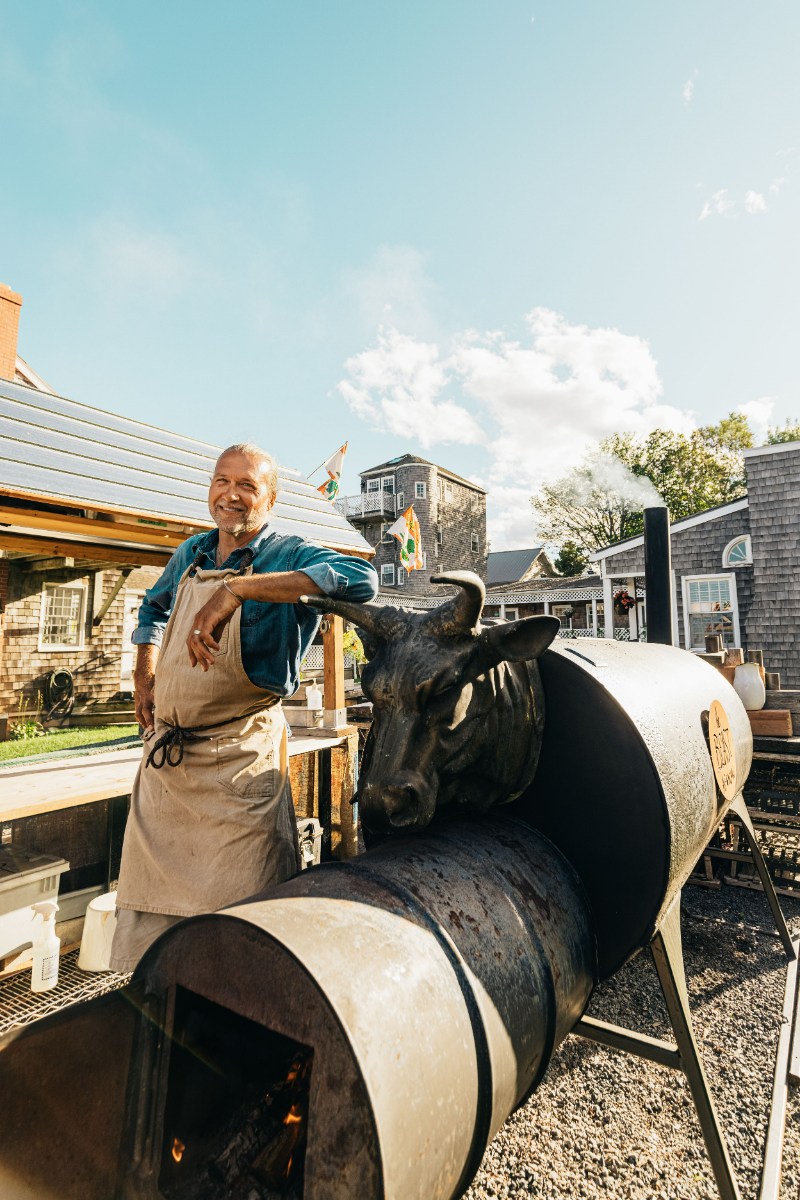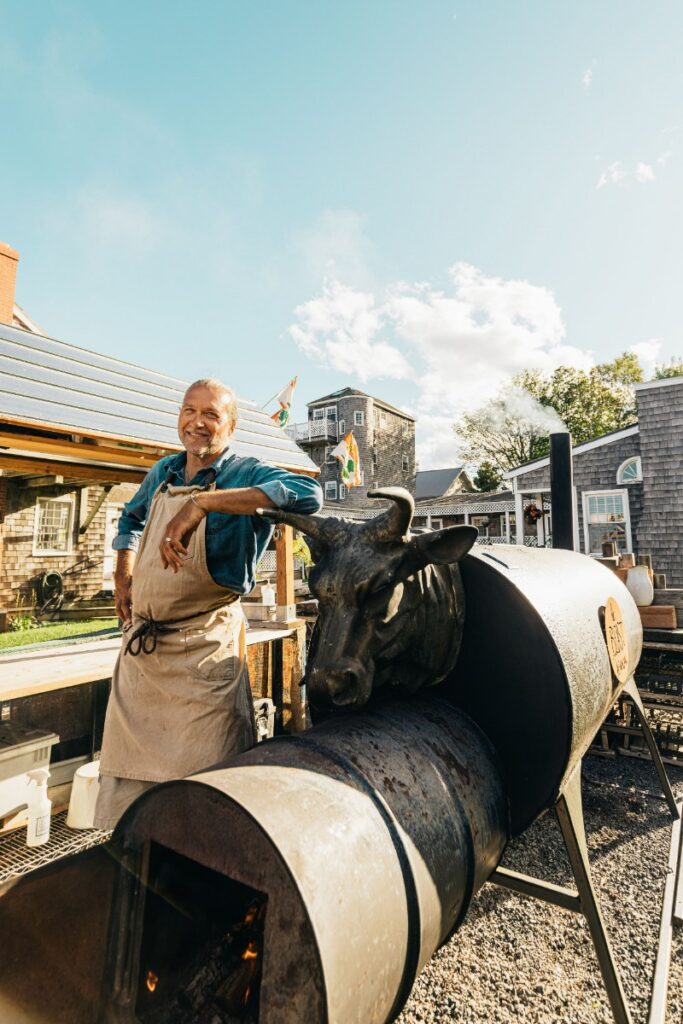
The Art of Cooking with Fire
By Chef Michael Smith
In the great outdoors, we’re unrestrained by the limits of mortgages, insurance policies and fine print. We’re not reckless, but over the years, we’ve collected a vast collection of fire-driven ideas that we feature during oyster hour, as our guests wander our whimsical grounds.
We can build a fire anywhere but prefer it up off the ground for ease and effect. Each fire has a specific purpose and thus defined characteristics. We grill, char, smoke, sear, roast, toast, steam and simmer daily. Just when you think you’ve seen it all, we even build a roaring campfire for toasting marshmallows.
I’ve spent my life around fires and good food, so I’ve heard a few stories and learned a few lessons: The craft of the fire; the art of cooking; respect for safety as my constant companion; wood smoke is addictively delicious; people are drawn to fires; drying wood for years and tending a fire for many hours for mere moments of flavour seems perfectly natural. With these lessons, I’ve cracked the code of the crackling flame.
There is only one way of the flame. Zen is within the art and craft of wood-fired cookery. Calm and quiet is found in the flames, because to harness fire requires absolute focus. You have to be present – for safety, of course, but also for the active creation and control of heat. There are so many constant variables that you must pay attention. It’s so seductive, addictive even. Hours flash by in seconds. It’s hard work, but it’s tremendously rewarding. And you smell really good!
Combining Maritime tradition with a good fire, I’d like to share our recipe for ember-roasted oysters with Love Butter. The fine art of oyster shucking, slurping, chewing, and swallowing is an essential Maritime skill. Setting up and hosting an oyster bar is also an awesome party trick. It’s respectful of your guests or fellow partygoers. If you can’t play fiddle or piano or stay sober, shuck the oysters.
Oysters travel extremely well, so be sure to get your hands on some fresh ones. Visit your trusted fishmonger or arrange to have them shipped directly to your home from a fisher. You’ll pay a premium, but you’ll get a premium product. And don’t forget…the briny liquid in the oyster is delicious. In the shucker’s code, it belongs to the guests, so the pros don’t spill a single drop!
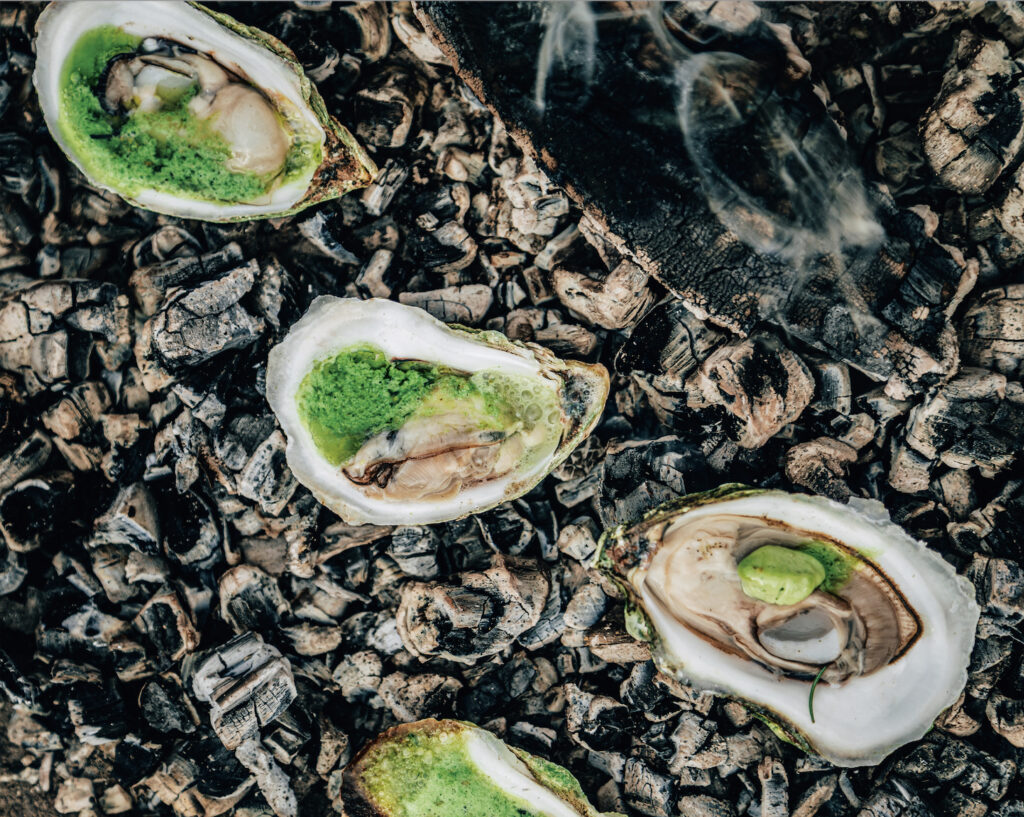
EMBER-ROASTED OYSTERS
With Love Butter
Oysters are always the life of the party. To heat up for an extra-special occasion, we like to coax a hot fire into a warm bed of coals ready for super-cool local oysters with red-hot Love Butter. Maybe that’s why oyster hour is our guests’ favourite time of day. Imagine a raging hardwood fire patiently subsiding into a thick bed of glowing coals, nestled in the coals are freshly shucked oysters from the bay out front of the inn, their fresh juices gently simmering with a shockingly green, scandalously flavoured, yet appropriately named butter. A brief moment of intensely flavoured ecstasy. What could go wrong?
Lovage grows prolifically on our farm. Its intense celery-like flavour and persistent bright green colour make it one of our favourite herbs. Unsurprisingly, our love for lovage gave rise to Love Butter. But if you can’t find lovage, you can substitute green onions (dark green parts only), fresh tarragon, dill, or parsley. Make the Love Butter ahead of time.
Makes about 1 cup (250 mL), enough for 4 dozen oysters.

Special Equipment Needed:
A large wood fire, its fuel and eventual fiery bed of coals; 2 or 3 shucking knives; 1 or 2 extra-long tongs; heavy duty work glove for the hand that holds the tongs.
Ingredients
¼ cup (60 mL) fresh lovage leaves
2 tablespoons (30 mL) cold water
1 cup (250 mL) butter, at room temperature
4 dozen impeccably fresh oysters from a well-connected fishmonger
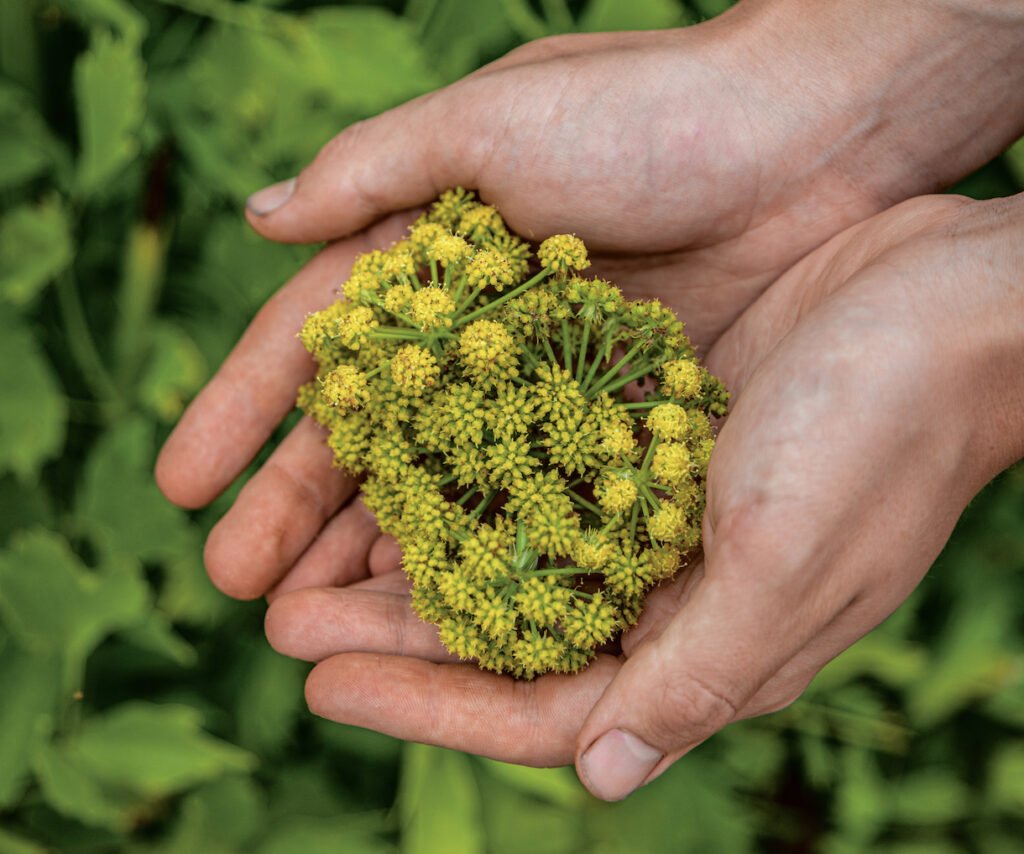
Making the Love Butter
Bring a pot of lightly salted water to a roiling boil. Fill a large bowl with the coldest water your taps can muster.
Remove the pot of boiling water from the heat. Working quickly and using a spoon or tongs, plunge the lovage leaves into the simmering water, swirl as they immediately brighten and wilt, just 10 seconds or so. Drain through a mesh strainer or colander without pressing. Quickly transfer the leaves to the cold water, swirling and cooling, 30 seconds more. Drain again without pressing. Transfer the wet leaves to a blender. Add 2 tablespoons (30 mL) cold water. Puree, scraping down the sides ones or twice, until bright green and thoroughly smooth. Transfer to a small bowl and refrigerate, uncovered, until cool.
Add the butter to the blender or a food processor. Puree the butter, scraping down the sides, until smooth. Add the chilled lovage puree and continue processing until smooth. Store in a resealable container in the fridge for up to 1 month.
Build a Fire, Shuck and Roast the Oysters
Build and tend a large fire until it subsides into a thick bed of glowing coals. Meanwhile, shuck the oysters, taking special care not to spill their brine. Steady with the accumulating top shells inverted onto a serving platter. Top each with a spoonful of love butter.
Grasp the edge of a shell with the tip of your tongs and nestle it into the coals. Repeat until the first dozen oysters are cooking. Watch as the juices and melted butter mingle, the oysters just barely poaching, 1 to 2 minutes. As soon as the juices simmer gently at the edges of the oysters, they are done. Any longer and they will overcook, shrivel, toughen, and dry out. Carefully remove the oysters from the coals and rest again on the top shells until cool enough to slurp. Enjoy the firm yet still tender texture of a just-poached oyster. Repeat with remaining oysters.
A Safety Note:
What could go wrong? Exploding shells! Forgotten in the fire by a distracted cook, a thicker oyster shell left for too long in a hot bed of coals will eventually dry out and may crack or explode. It’s not particularly dangerous, but it is sudden and surprising, and easily avoided by not overcooking the oysters.
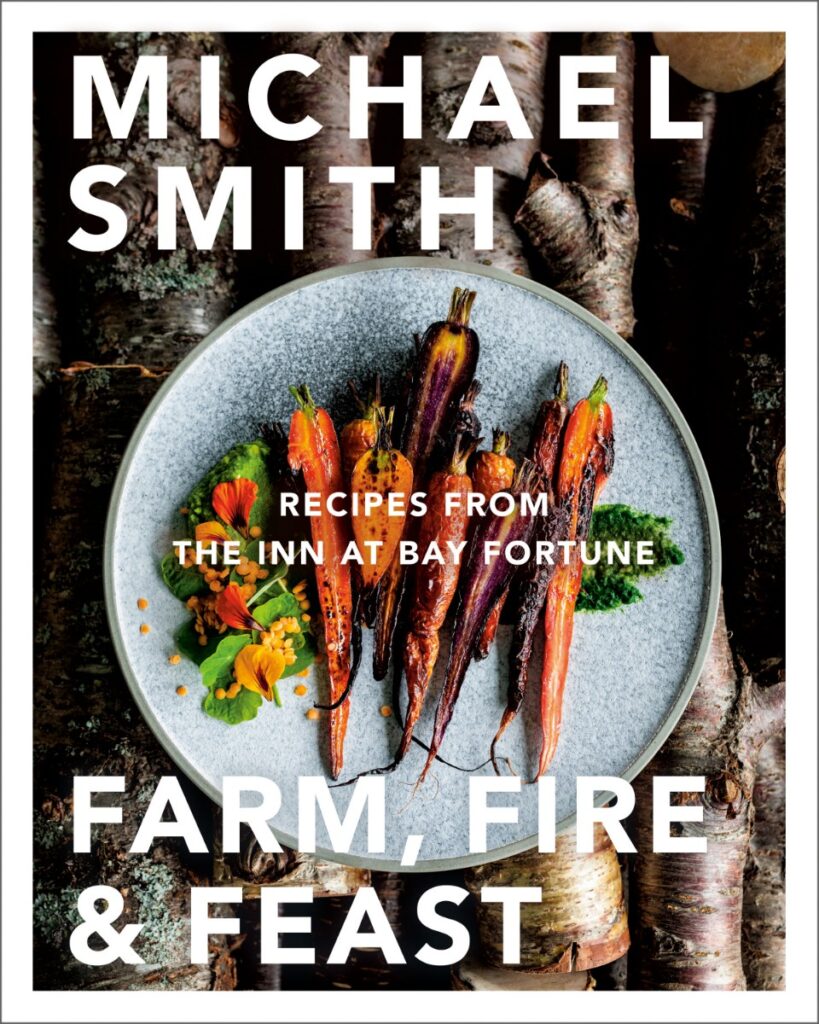
Celebrity Chef Michael Smith and his wife, Chastity, are the proprietors of The Inn at Bay Fortune and the award-winning restaurant FireWorks, Bay Fortune, Prince Edward Island. Michael is the bestselling author of nine cookbooks. His latest, FARM, FIRE & FEAST features recipes from the acclaimed 5-star Inn at Bay Fortune.

